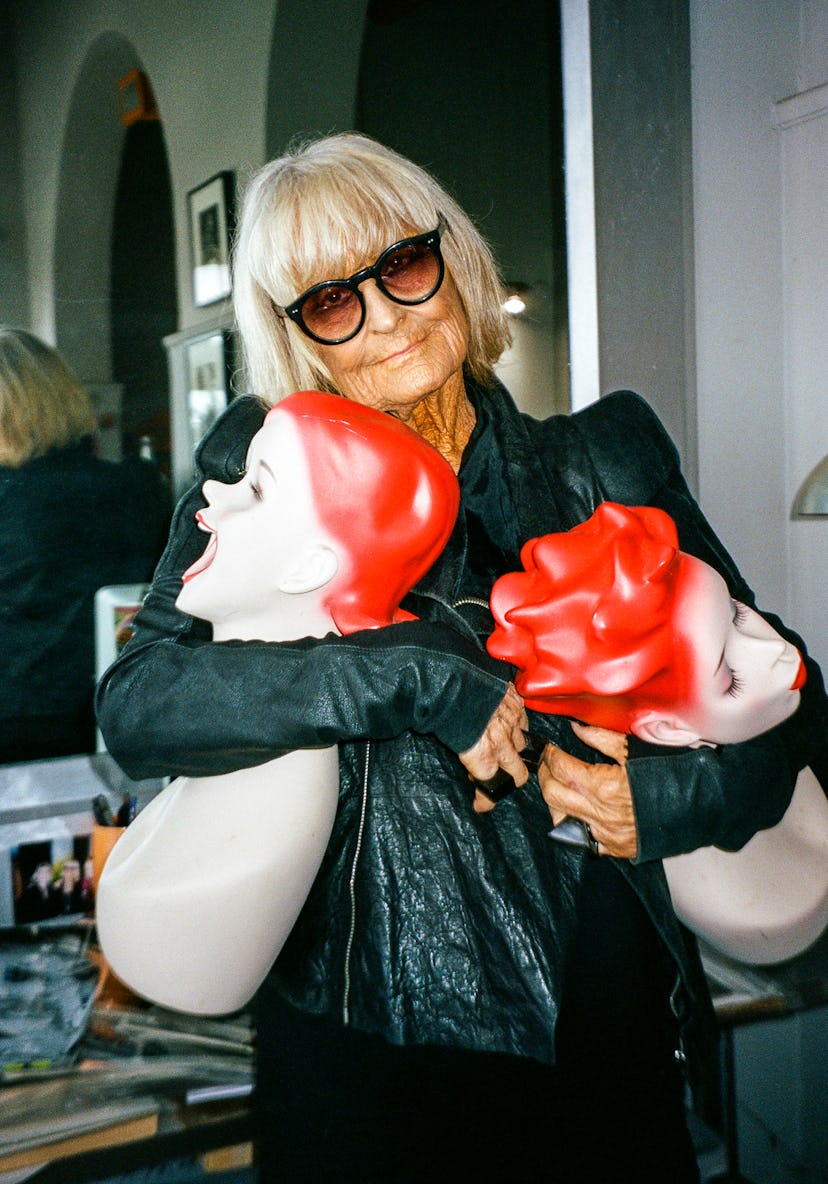How Biba Founder Barbara Hulanicki Rewrote the Rules of Fashion

For our annual “The Originals” issue, we asked creatives—pioneers in the fields of art, design, fashion, comedy, activism, and more—to share their insights on staying true to themselves. Read all of this year’s interviews here.
In Swinging ’60s and ’70s London, your shop, Biba, was the place to be—a hangout for stars like Mick Jagger and Brigitte Bardot, as well as masses of groovy girls in search of the perfect floppy hat, feather boa, and barely there miniskirt. Why do you think it was such a success?
You don’t realize how bad things were in England in that period. You had this incredible generation that had money to spend and nowhere to spend it. We wanted something to wear out dancing, but there was nothing but frumpy old-lady clothes. And fashion was just for ladies who lunched. Like at Dior, it was 25 black dresses, one with two buttons here, the next with three buttons there, and the next with four buttons. It was the same style again and again. Excuse me, Dior! Now I’ll never be allowed in there again.
How did you get your start in fashion?
I went to Brighton School of Art [now University of Brighton, School of Art and Media] to do fashion, but I felt like it would take too long, and I was impatient to leave home and be out on my own. I thought illustration might be quicker. There was tons of illustration work in all the fashion houses in Paris, so I was able to see all of that, which was amazing—and amazing how boring all the clothes were. I did four years, and it was enough. My husband, Fitz, said, “I think you should try to get back to designing.” Mail order was growing like mad, like online shopping is now. I could run a drawing in the newspaper, and we would sell the garment that way. It was absolute hell! Fitz and I had to pack orders at night because we both had jobs during the day. And we were just about to give up when Felicity Green from the Daily Mirror called me and said, “I want you to design a dress for us.” So I came up with a pink gingham dress that was very cheap—25 shillings. In the end, we sold 90,000 dresses, all one size and one color.
In 1974, you took over an eight-floor Art Deco department store on Kensington High Street, where you sold everything from frocks and lipstick to canned beans, home decor, and, famously, very chic black diapers. How did Biba evolve from a fashion label to what was really the first lifestyle brand?
Well, we just got bigger and bigger because we were packed! We were the No. 2 tourist destination in London at one point. Tower of London was No. 1, we were No. 2, and Buckingham Palace was No. 3. And I found that anything I needed, my customers also needed. We all wanted good food like they had in France, because English food was dreadful. And then we wanted to fix up our homes, so we started doing interiors and home stuff. And then we had babies, and we needed children’s things. My son is in his 50s now, and he says, “Mum! Can you please stop talking about my black nappies already!”
Barbara Hulanicki, in her Miami studio with photos, sketches, trinkets, and a copy of her book From A to Biba.
Photo assistant: Alfonso Duran.
You’re in your 80s, and you’ve never stopped creating. You did the interiors for Chris Blackwell’s hotels, you just illustrated the new Bottega Veneta campaign, and for spring, you’re launching a new label, Hula, with the digital fashion platform BrandLab360. What keeps you going?
Fashion never stops, does it? And I love retail. I was brought up in Palestine before it was Israel, and there were no shops. I had never seen a doll in my life before I came to England. So I was just so excited about being able to buy my own clothes and things. And that excitement never went away. In the ’60s, the posh old women would arrive with their drivers to the department stores and work their way up floor by floor. They’d shop, have their hair done, then their makeup done, then have tea and drink themselves stupid. It was all lifestyle! And I think that would work again now, because who wants to worry about fighting traffic and parking and all that boring stuff? I’m watching that space very, very carefully. I’d still love to do a shop.